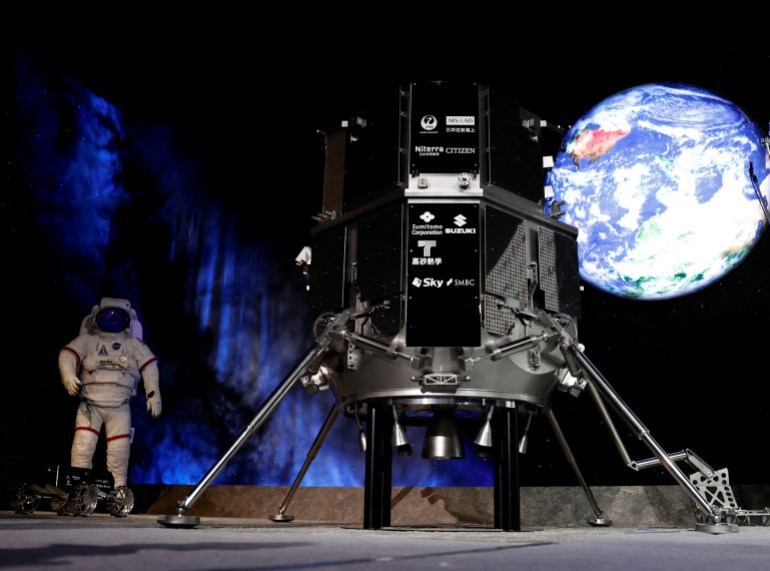‘Hard landing’: Japanese company’s bid for moon landing fails
Flight controllers at start-up ispace lose contact with spacecraft moments before planned touchdown.

A Japanese company lost contact with its spacecraft moments before it was due to touch down on the moon, and has conceded the mission had apparently failed.
Start-up ispace, aiming to become the first private company to land a craft on the moon, said it was still unable to make a connection with the uncrewed Hakuto-R Mission 1 lander about 25 minutes after it was scheduled to have touched down on the moon’s surface.
Keep reading
list of 3 itemsNASA reveals historic crew for 2024 Artemis moon voyage
Explaining JUICE: Mission to Jupiter and its moons
“It has been determined that there is a high probability that the lander eventually made a hard landing,” ispace said in a statement, saying its engineers were working to understand why the landing had failed.
The M1 lander appeared set to touch down at about 16:40 GMT Tuesday after coming as close as 90m (295ft) to the lunar surface, a live animation of the lander’s telemetry showed.
Communications then ceased as the lander descended the final 10m (33ft), travelling at about 25 kilometres per hour (16 miles per hour). Flight controllers peered at their screens in Tokyo, expressionless, as the minutes went by with no word from the lander.
The spacecraft launched from Cape Canaveral, Florida, in the US on a SpaceX rocket in December and had completed several mission objectives leading up to its landing attempt.
“We believe that we have fully accomplished the significance of this mission, having acquired a great deal of data and experience,” ispace CEO and founder Takeshi Hakamada said, as he acknowledged the failure to make the landing.
“What is important is to feed this knowledge and learning back to Mission 2 and beyond,” he added.

White rabbit
Only three countries have successfully touched down on the moon: Russia, the United States and China.
India also attempted to land a spacecraft on the moon in 2016, but it crashed, and an Israeli non-profit tried in 2019, but its spacecraft was destroyed on impact.
Two US companies, Astrobotic and Intuitive Machines, are scheduled to attempt moon landings later this year.
“We congratulate the ispace inc team on accomplishing a significant number of milestones on their way to today’s landing attempt,” Astrobotic said in a tweet.
“We hope everyone recognises — today is not the day to shy away from pursuing the lunar frontier, but a chance to learn from adversity and push forward.”
The 2.3-m (7.5-ft) Japanese lander carried a mini lunar rover for the United Arab Emirates and a toy-like robot from Japan designed to roll around in the moon dust. There were also items from private customers on board.
Named Hakuto, Japanese for white rabbit, the spacecraft had targeted Atlas crater in the northeastern section of the moon’s near side, more than 87km (54 miles) across and about 2km (1.2 miles) deep.
Hakuto took a long, roundabout route to the moon following its December lift-off, beaming back photos of Earth along the way.
With just 200 employees, ispace has said it “aims to extend the sphere of human life into space and create a sustainable world by providing high-frequency, low-cost transportation services to the Moon”.
Ispace believes the moon will support a population of 1,000 people by 2040, with 10,000 more visiting each year.
It plans a second mission, tentatively scheduled for next year, involving a lunar landing and the deployment of its own rover.